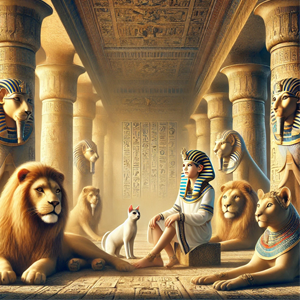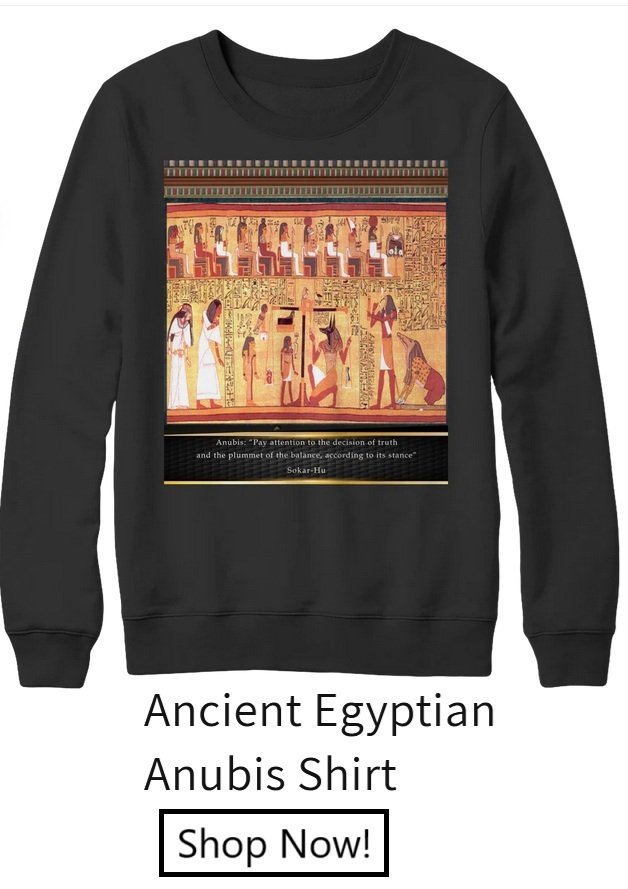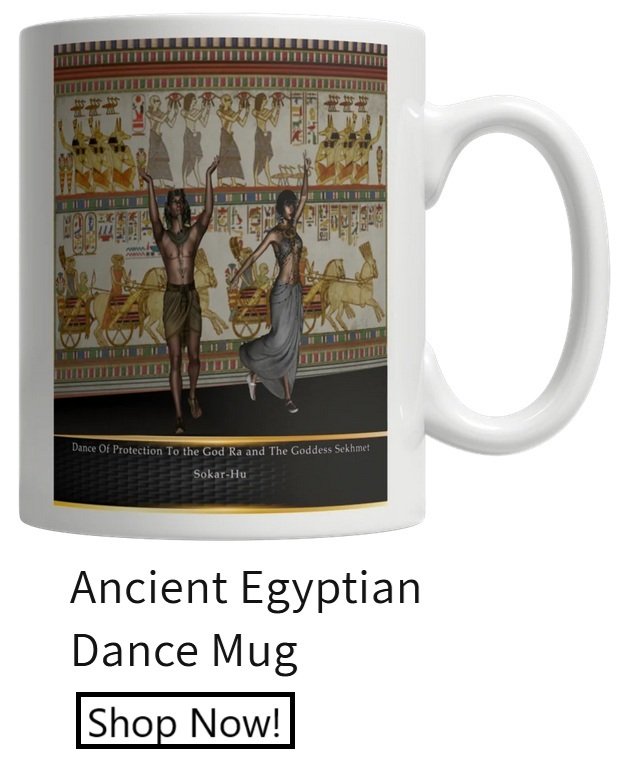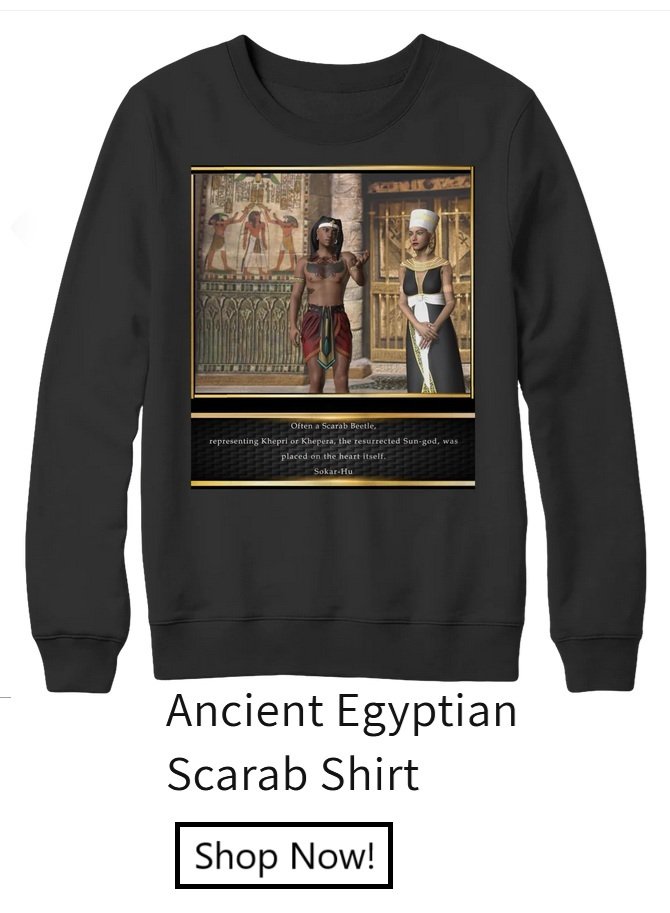 The reign of the boy king Tutankhamun was a time of great reverence for the gods. After a period of religious upheaval, the ancient gods of Egypt had been restored to their rightful places in the temples and hearts of the people. Among these powerful deities, none were as fiercely protective as Sekhmet, the lioness-headed goddess of war, healing, and vigilant guardianship. Legends of her mighty spirit filled the air of the pharaoh’s courts, and her influence could be felt in every corner of the palace—especially in the form of the animals believed to carry her divine protection.
The reign of the boy king Tutankhamun was a time of great reverence for the gods. After a period of religious upheaval, the ancient gods of Egypt had been restored to their rightful places in the temples and hearts of the people. Among these powerful deities, none were as fiercely protective as Sekhmet, the lioness-headed goddess of war, healing, and vigilant guardianship. Legends of her mighty spirit filled the air of the pharaoh’s courts, and her influence could be felt in every corner of the palace—especially in the form of the animals believed to carry her divine protection.
A Young Pharaoh and His Fascination with Sekhmet
As a young king, Tutankhamun was deeply aware of his own vulnerability, ruling a kingdom in his teenage years. The young pharaoh was particularly captivated by the stories of Sekhmet. It was said that when Sekhmet walked the earth, her very gaze could lay waste to enemies or bring healing to the devoted. The priests told Tutankhamun how Sekhmet was created from the eye of Ra, the sun god, and how she protected Egypt from chaos.
Inspired by these tales, Tutankhamun filled his court with symbols of Sekhmet’s strength and protection, from statues of lions to revered pets that embodied the goddess’s spirit. He believed these creatures, graced with Sekhmet’s watchful energy, would shield him and his kingdom from harm.
The Lions of the Royal Court
In the innermost gardens of the royal palace, Tutankhamun kept two majestic lions, creatures that evoked Sekhmet’s power and vigilance. These lions, known as Neb and Iri, were treated with the utmost reverence. Trained and cared for by a select group of handlers, the lions roamed the palace grounds as living embodiments of Sekhmet’s protection. They had a regal presence, walking slowly and deliberately, as though fully aware of the divine energy they carried.
Neb, the elder of the two, had a golden mane that seemed to glow in the sunlight. It was believed by many in the palace that Sekhmet’s spirit lived within him, guarding the king from curses and dark spirits. Whenever Tutankhamun performed a ritual or prayed to the gods for protection, Neb would be brought to his side, sitting quietly, his eyes steady and calm.
The other lion, Iri, was younger and more restless, embodying the fierce energy of the goddess in her battle form. During ceremonies, Iri’s low growls echoed through the halls, a reminder to all of Sekhmet’s presence and power. The priests would often place amulets around the lions’ necks, believing that these talismans would amplify Sekhmet’s protective spirit within them.
Cats: Guardians of the Palace and Divine Messengers
While the lions represented Sekhmet’s mighty power, it was the cats that filled the palace chambers with her quieter, more personal protection. Egyptian households already revered cats for their roles as protectors against vermin, but in the palace, cats were elevated to sacred status. Known as the “Eyes of Sekhmet,” they were believed to be blessed with her spirit, serving as guardians for the pharaoh and his family.
One such cat, named Nefertari, held a special place in Tutankhamun’s court. A sleek, graceful creature with golden fur, Nefertari was more than just a companion—she was considered a divine protector. The priests whispered that Nefertari had appeared on the palace steps during a festival honoring Sekhmet, and her presence was taken as a sign that the goddess herself had sent the cat to guard the young king.
Nefertari was known for her unusual behavior, as if she had an otherworldly awareness of her surroundings. She would often sit outside the doors of Tutankhamun’s chambers, alert and watchful, especially on nights when the king was unwell or troubled. It was believed that her presence would shield him from harmful spirits or bad dreams. The queen, Ankhesenamun, would often leave small offerings of milk and honey beside Nefertari, thanking the goddess for her protection.
The Serpents of Sekhmet: Guardians Against the Unseen
In the depths of the palace, where only the priests and high officials ventured, another of Sekhmet’s creatures could be found—the serpent. Though feared by many, serpents were seen as sacred in Sekhmet’s eyes, creatures that carried her energy and served as protectors against dark magic and unseen forces. Small serpents were sometimes kept in clay jars in the palace, believed to hold protective energy and ward off curses that might be cast upon the pharaoh.
Tutankhamun’s chief priest, Imhotep, was known to wear a serpent-shaped amulet when he conducted important rituals for the king. It was believed that by invoking the power of the serpent, he could summon Sekhmet’s protection to shield the court from any hidden threats. The serpents themselves were treated with care, and when one passed away, it was buried with ceremony, as a token of respect for the goddess.
Sekhmet’s Blessing: The Royal Guard of Animals
As Tutankhamun’s reign continued, his devotion to Sekhmet and her protective animals grew. It was said that the king’s court had become a sanctuary of divine guardianship, where each creature served a purpose and carried the goddess’s spirit in its own unique way. The lions, cats, and serpents were more than pets or symbols—they were Sekhmet’s living emissaries, reminders that even in times of peace, the goddess was always watching, ready to protect her faithful.
On the day of a great festival honoring Sekhmet, Tutankhamun led a procession through the palace grounds, stopping at each animal’s station to offer gifts. He approached Neb and Iri, the lions, with reverence, placing garlands around their necks as a symbol of respect. He knelt before Nefertari, the cat, offering a bowl of milk and a blessing. Finally, he honored the serpents, thanking them for their unseen protection.
A Legacy of Divine Protection
Tutankhamun’s court became known for its reverence of Sekhmet’s spirit, and his devotion to her sacred animals left a lasting mark on Egypt. Long after his reign, Egyptian households would continue to keep cats as protectors, viewing them as emissaries of Sekhmet. Lions and serpents, too, were seen as creatures of power and protection, symbols of the goddess’s fierce guardianship.
The legacy of Sekhmet’s protective pets in the court of King Tutankhamun endures as a testament to the deep bond between humans, animals, and the divine. Through lions, cats, and even serpents, the ancient Egyptians found comfort, strength, and security, knowing that Sekhmet’s spirit was with them—watching, protecting, and guiding them through the mysteries of life and beyond.




 The reign of the boy king Tutankhamun was a time of great reverence for the gods. After a period of religious upheaval, the ancient gods of Egypt had been restored to their rightful places in the temples and hearts of the people. Among these powerful deities, none were as fiercely protective as Sekhmet, the lioness-headed goddess of war, healing, and vigilant guardianship. Legends of her mighty spirit filled the air of the pharaoh’s courts, and her influence could be felt in every corner of the palace—especially in the form of the animals believed to carry her divine protection.
The reign of the boy king Tutankhamun was a time of great reverence for the gods. After a period of religious upheaval, the ancient gods of Egypt had been restored to their rightful places in the temples and hearts of the people. Among these powerful deities, none were as fiercely protective as Sekhmet, the lioness-headed goddess of war, healing, and vigilant guardianship. Legends of her mighty spirit filled the air of the pharaoh’s courts, and her influence could be felt in every corner of the palace—especially in the form of the animals believed to carry her divine protection.